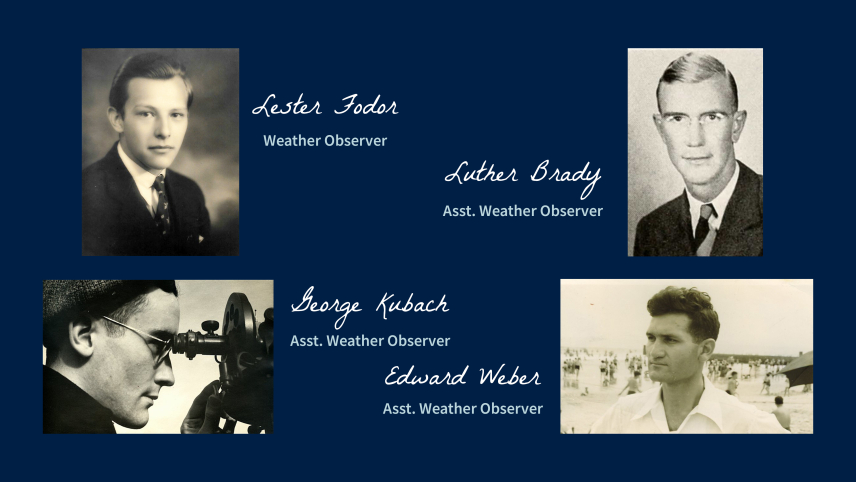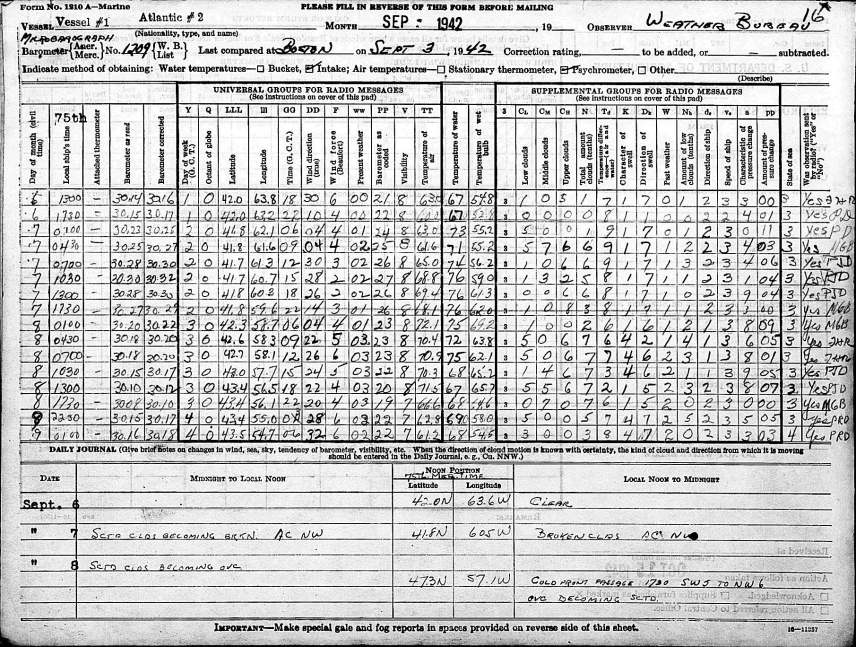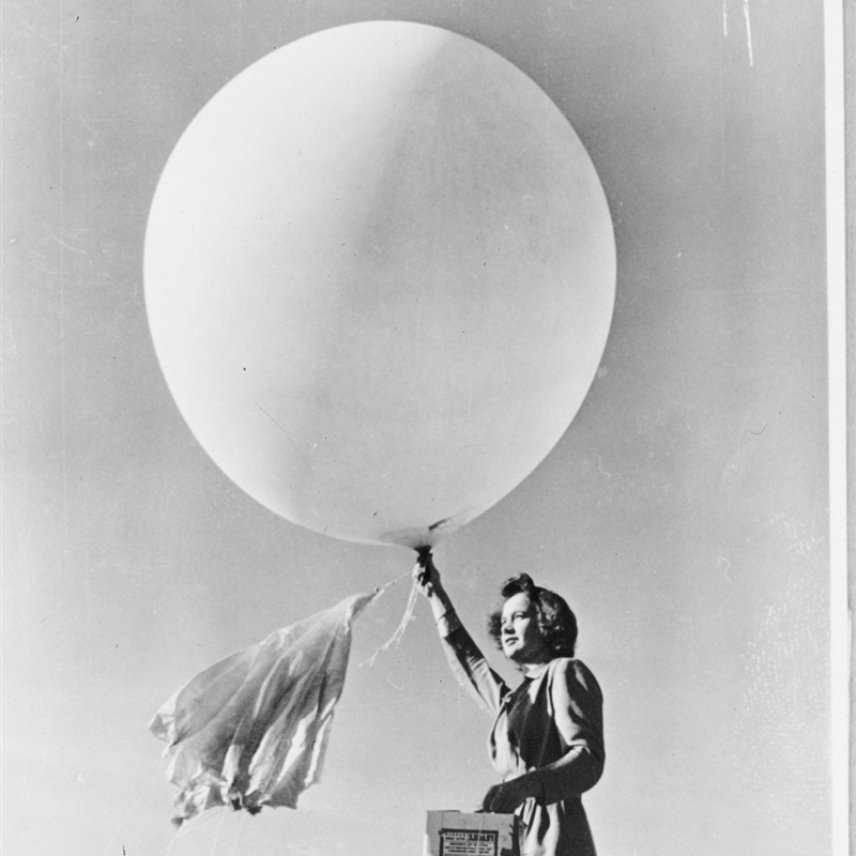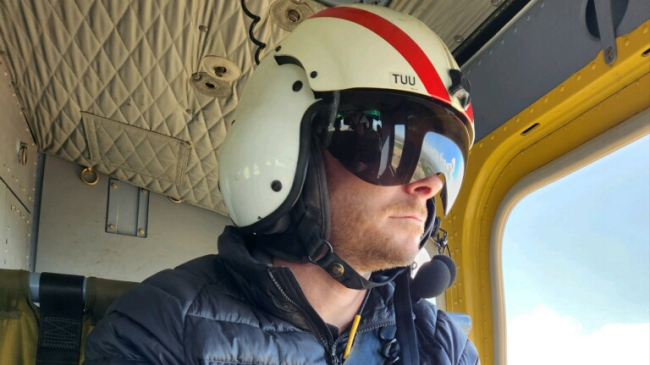On September 11, 1942, during World War II, the U.S. Coast Guard Cutter Muskeget disappeared. The entire crew, including four young weather observers from the U.S. Weather Bureau, the predecessor of NOAA’s National Weather Service, was lost. It was decades before the U.S. military discovered what happened to them and their shipmates.

Less than two months after the attack on Pearl Harbor, the Weather Bureau’s Chief, Francis Reichelderfer, invited “applications of men who desire assignments to weather ships stationed in the Atlantic.” Lester Fodor offsite link, Luther Brady offsite link, George Kubach offsite link, and Edward Weber offsite link were quick to respond. On August 24, 1942, their ship, the Muskeget, departed Boston on the way to Weather Station No. 2 in the North Atlantic. During their time in the area, the four civilian volunteers took weather observations to aid safe navigation by vessels containing troops, fuel, munitions, and supplies, and the ship sent those out as coded messages. Then on September 9, all communication stopped abruptly.

Two days later, the Monomoy, which had been on its way to relieve the Muskeget, reported the ship missing and all of the ships and aircraft in the area began searching for the lost vessel. The area was known to be frequented by enemy submarines, but they were unable to find any sign of the ship or its crew. There had been 121 men on board: 9 commissioned officers, 107 enlisted men, one Public Health Service officer, and the four civilian weather observers from the U.S. Weather Bureau.

Soon after the ship vanished, all of the military personnel who were lost received Purple Hearts posthumously. The general assumption was that they had been killed as a result of enemy action. However, because they were civilians, the four weather observers were not eligible for the Purple Heart until the logs from German submarine U-755 were discovered in 2014 and the military was finally able to confirm what they had all along suspected. The submarine logs reported torpedoing a U.S. auxiliary merchant cruiser in the area on September 9, 1942.
On November 19, 2015, a Purple Heart award ceremony was held at the U.S. Navy Memorial to honor the weather observers who went down with the Muskeget. This was the first known time the Purple Heart has been awarded to a civilian member of NOAA’s National Weather Service or its predecessor agencies while serving in that capacity.






